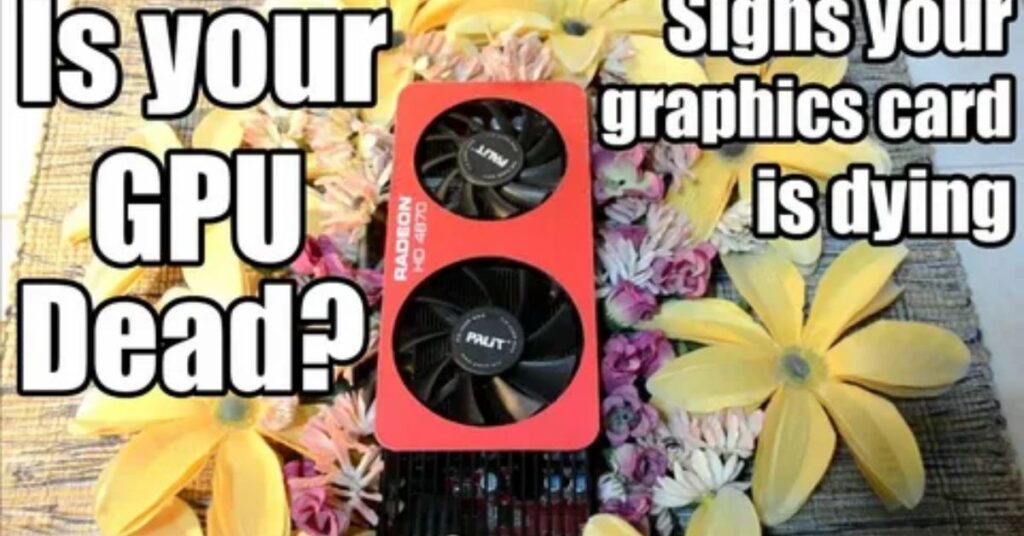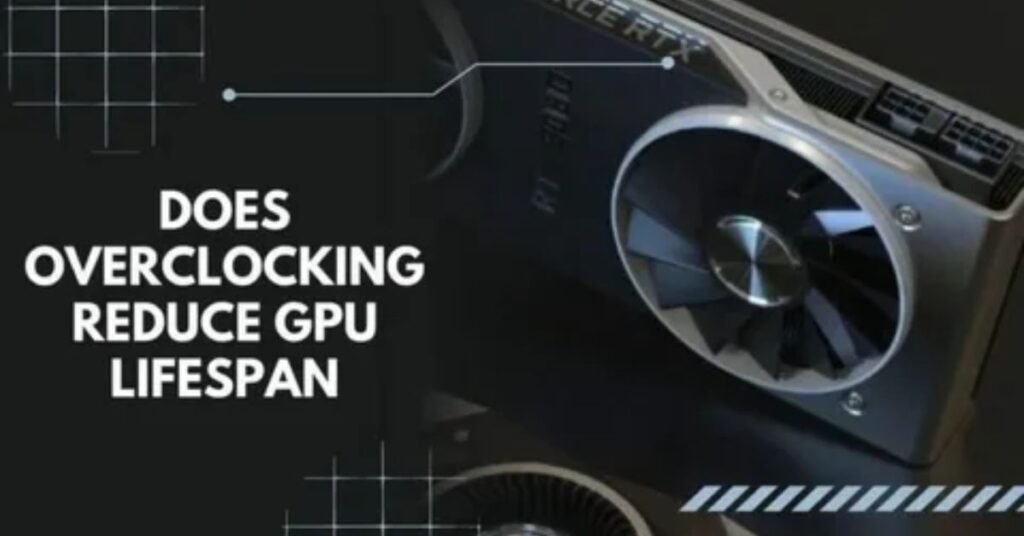A GPU usually lasts 5 to 8 years if used with care. Good cooling, clean power, and no overuse help it live longer. Heavy gaming or mining can shorten its life.
In this guide, you’ll learn what affects GPU life, how to make it last longer, and when it’s time to upgrade—so your money doesn’t go to waste.
Introduction
If you’re spending big on a GPU, you want it to last long. Gaming, mining, or editing—your GPU works hard. But the real question is: how long will it keep going strong before it slows down or dies?
Why GPU Lifespan Matters
Your graphics card isn’t just some flashy component. It’s the powerhouse that gives life to your screen. If it fails, it doesn’t just mean laggy games — it could mean black screens, crashes, and lost productivity. Understanding its lifespan can help you plan upgrades, prevent performance issues, and get the most bang for your buck.
Average Lifespan of a GPU
Lifespan Under Normal Usage
Under regular gaming or casual use, a GPU can easily last 5 to 8 years. Some GPUs even push 10 years if treated well. Of course, they may not stay relevant that long — tech moves fast — but they can still work just fine.
Lifespan Under Heavy Gaming or Mining
If you’re a hardcore gamer playing 6+ hours a day or mining 24/7, expect 3 to 5 years of optimal performance. High thermal loads and constant stress wear out components faster.
Key Factors Affecting GPU Longevity
Usage Patterns
- Gaming: Stressful, especially AAA titles.
- Mining: Continuous load, often 24/7.
- Workstations: Heavy compute but usually well-cooled.
- Office work: Very light; can stretch GPU life well beyond a decade.
Heat and Temperature Control
Heat is the silent killer. Constant temperatures above 85°C (185°F) can shorten lifespan. GPUs are built to handle heat, but not forever.
Dust and Physical Maintenance
Dust clogs fans, traps heat, and causes instability. Regular cleaning is a must. A dusty GPU is a dying GPU.
Overclocking and Undervolting
- Overclocking can add performance but shortens life if cooling isn’t excellent.
- Undervolting, on the other hand, reduces power draw and heat, increasing lifespan.
Manufacturing Quality and Brand
Not all GPUs are equal. Higher-end brands (ASUS ROG, MSI Gaming X) often have better components and cooling, which translates to longer life.
Signs Your GPU Is Dying

Artefacts on Screen
Weird colours, lines, or checkerboard patterns during gameplay? That’s usually a dying GPU waving the white flag.
Crashes and Freezes
Random crashes during light tasks or while booting? That’s a red flag. Especially if it happens under load.
Performance Degradation
If your games are running worse over time (and it’s not the game’s fault), your GPU could be losing its edge.
Fan Noise or Failure
If your fans are going turbo mode all the time or not spinning at all, that’s a mechanical problem that could spell the end.
How to Extend GPU Lifespan

Proper Cooling and Airflow
Good airflow in your case + quality thermal paste = happy GPU.
Regular Cleaning and Dust Removal
Every few months, give your PC a good dusting. Use compressed air and keep filters clean.
Avoiding Overvolting and Extreme Overclocking
Push your GPU only if you know your cooling is solid. Otherwise, stay stock or undervolt.
Updating Drivers and Firmware
Old drivers can cause crashes and poor performance. Stay updated — it’s free longevity.
Using a UPS or Surge Protector
Power surges = instant death. A surge protector or UPS is a cheap insurance policy.
When Should You Replace Your GPU?
Performance Bottlenecks in New Games
If you’re turning every setting down and still struggling at 30 FPS, it might be time.
Compatibility With Latest Software/Hardware
Newer software may need features your GPU doesn’t support. That’s when upgrades make sense.
Cost of Repair vs. New GPU
If your GPU dies and repair costs are high, a newer, more efficient model might be a smarter investment.
How Long Do GPUs Last for Different Use Cases?
Casual Gaming
5–8 years, sometimes more.
Competitive eSports and AAA Gaming
3–5 years of peak performance.
Cryptocurrency Mining
2–4 years due to non-stop workload.
AI and Machine Learning
3–6 years, depending on load and cooling setup.
General Office Use
8–10+ years if not stressed.
GPU Lifespan Comparison by Brand
NVIDIA GPUs
Excellent long-term reliability. Many GTX and RTX cards still going strong after 6+ years.
AMD GPUs
Also durable, especially recent generations like RX 6000 and 7000 series. Slightly warmer, but manageable.
Custom AIB Cards (ASUS, MSI, Gigabyte, etc.)
These usually outlast reference designs due to better cooling and power delivery.
Used GPUs – Should You Buy One?
Risks of Second-Hand GPUs
- No warranty
- Unknown usage history (was it mining 24/7?)
- Possible hidden damage
What to Check Before Buying
- Ask for benchmarks and stress test results
- Inspect for physical damage or corrosion
- Make sure fans and thermals are working properly
The Future of GPU Lifespan
Innovations in GPU Cooling
Liquid cooling, vapour chambers, and advanced fan designs are keeping temps lower than ever.
Efficient Power Management
Newer cards like NVIDIA’s 40-series or AMD’s RDNA3 are better at managing power, which helps reduce wear.
Durability Improvements by Manufacturers
Modern VRMs, thermal pads, and soldering methods are extending lifespan — even under stress.
FAQ’s
1. How Do I Know If My GPU Is Failing?
Learn the early signs like screen glitches, crashes, or noisy fans — so you can act before it’s too late.
2. Can I Make My GPU Last Longer?
Yes, with good cooling, dust cleaning, and avoiding overclocking, you can easily extend your GPU’s life by years.
3. Is 5 Years a Good Lifespan for a GPU?
Yes — for most users, 5 years is solid performance, especially with regular care and no extreme workloads.
4. Do All GPUs Die from Overheating?
No — but heat is the most common cause. Without proper cooling, even high-end cards can fail early.
5. Should I Avoid Used GPUs?
Yes, if you don’t know their history. A second-hand GPU may look fine but could be close to failing inside.
Conclusion
A GPU can serve you well for 5 to 8 years, or even longer with the right care. Clean it regularly, avoid overheating, and update drivers. Whether you’re gaming, editing, or mining, how you treat your GPU matters. Stay alert for failure signs and know when it’s time to upgrade—so you get top performance without wasting money.
